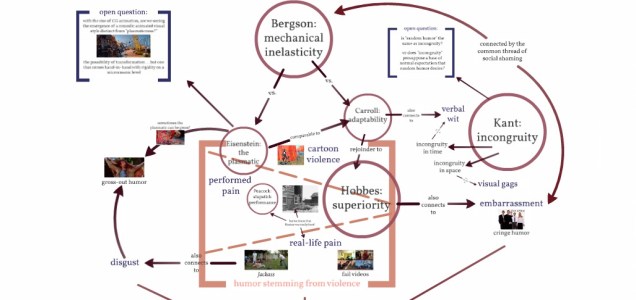
Ian here—
Grades for the School of the Art Institute of Chicago’s Fall 2016 semester were due today, and I wanted to take the occasion to do a quick postmortem on “Comedy and the Moving Image,” which I consider to be the most successful course I taught this term—as well as one of my most fun and productive courses ever taught. I’ve posted several lesson plans from this course already throughout the past couple of months. Links to those will be provided below, as I sketch out a skeletal version of the course’s themes, and some of its most interesting surprises.
I put this visual presentation together for our final class meeting. You should feel free to follow along with it … although I admit that, as you can see from the above image, it gets increasingly messy as you click through.




